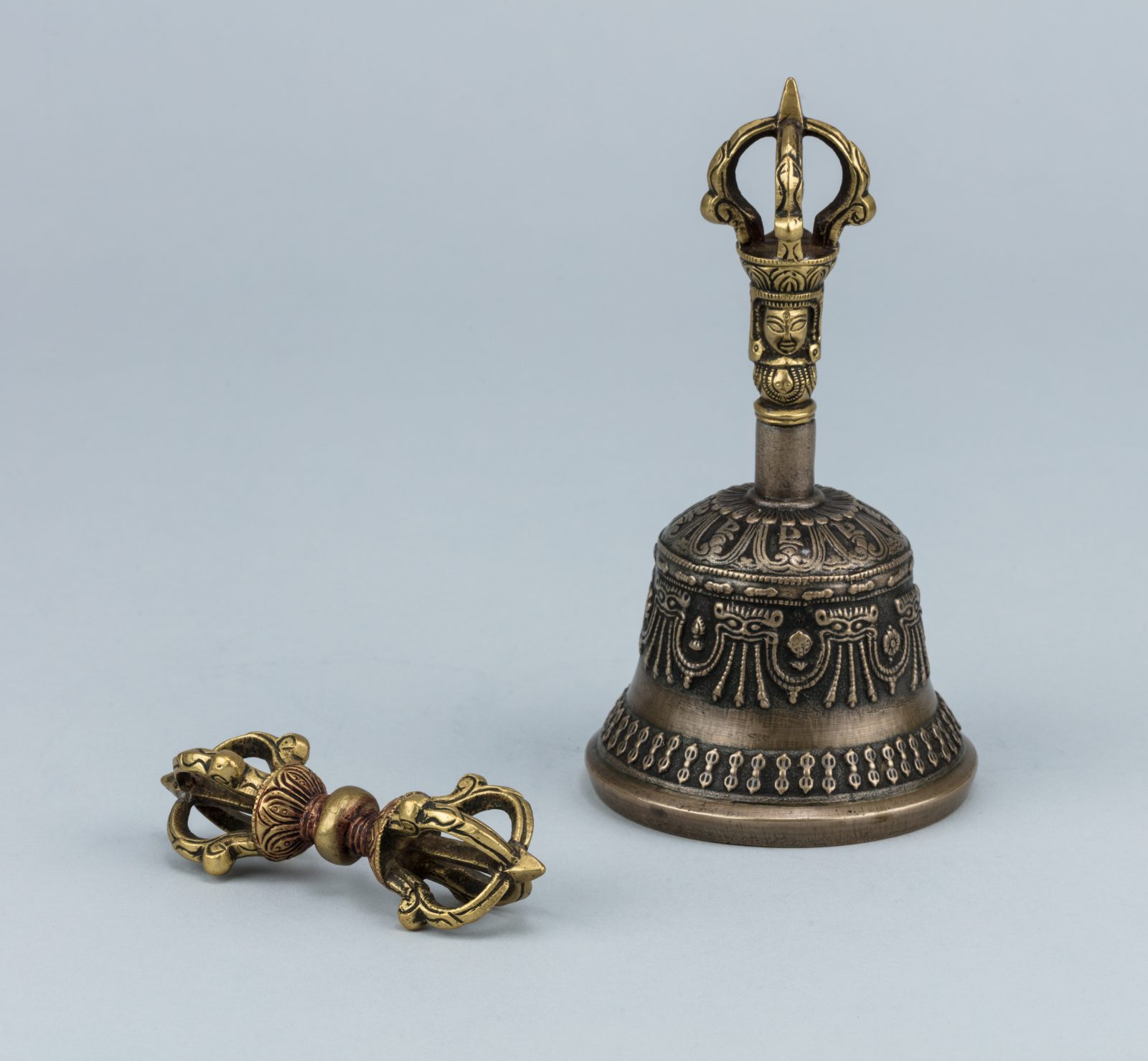

This week’s meditation session is led by Sharon Salzberg and the theme is Compassion. The guided meditation begins at 14:30.

Five-prong Bell & Dorje Set; Probably Urga or Dolonor, Mongolia; ca. late 19th century; Silver, metal (Li, five-metal compound); Rubin Museum of Himalayan Art, Gift of Phillip J. Rudko; C2014.7.4a-b
The vajra and bell are the most important ritual objects of Tibetan Buddhism. Most every lama has a pair and knows how to use them. They represent “method” (vajra) and “wisdom” (bell). Combined together they symbolize enlightenment as they embody the union of all dualities: bliss and emptiness, compassion and wisdom, appearance and reality, conventional truth and ultimate truth, and male and female, etc.
There are many different explanations of the symbolic meanings of the vajra and bell. The meanings can vary depending on the different tantra literature or cycle of Tantric practice. A general explanation describes the five pronged vajra scepter as representing twenty-eight deities and the bell representing twenty-three deities.

Sharon Salzberg, Cofounder of the Insight Meditation Society in Barre, Massachusetts, has guided meditation retreats worldwide since 1974. Her latest books are Real Life: The Journey from Isolation to Openness and Freedom and Finding Your Way: Meditations, Thoughts, and Wisdom for Living an Authentic Life. She is a weekly columnist for On Being, a regular contributor to the Huffington Post, and the author of several other books, including the New York Times bestseller Real Happiness: The Power of Meditation, Real Change: Mindfulness to Heal Ourselves and the World, Faith: Trusting Your Own Deepest Experience, and Lovingkindness: The Revolutionary Art of Happiness. Ms. Salzberg has been a regular participant in the Rubin’s many on-stage conversations and regards the Rubin as a supplemental office.
Get the latest news and stories from the Rubin, plus occasional information on how to support our work.